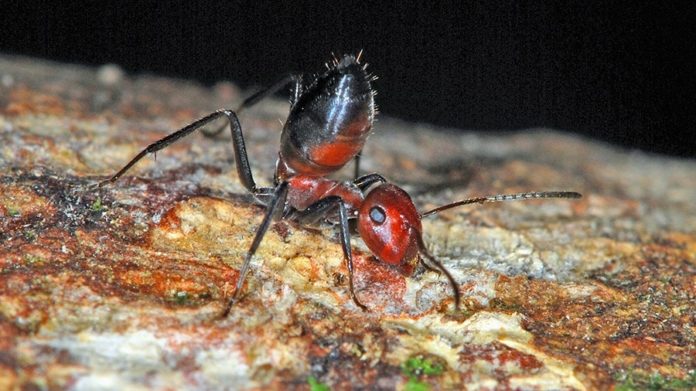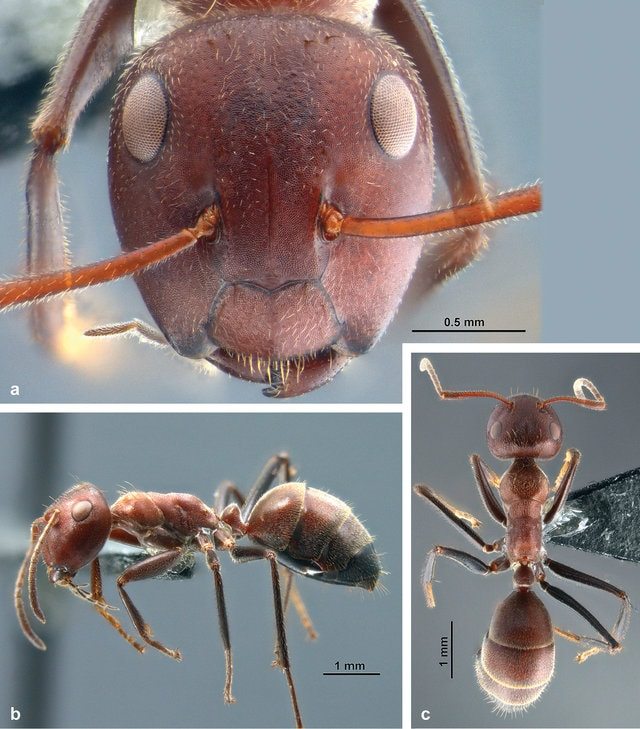Gallant “Exploding Ant” Offers Itself Up to Save its Colony
From ants that fly to ants that domesticate other creatures, ants are undoubtedly awesome. And in spite of their relative constancy in our lives, we don’t seem to know much about them nor do we give them much thought- aside from the fastest way to kill them that is. As it turns out, there are a great many intriguing facets about ants, many of which paint the little critters as shockingly close to human.
Now, an interdisciplinary team of researchers based in Austria, Thailand and Brunei are investigating the enigmatic “exploding ants” of Southeast Asia. The newly discovered species- the “exploding ants”- are a group of arboreal, canopy dwelling ants nicknamed for their unique defensive behaviour: When threatened by other insects, minor workers can actively rupture their body wall. This releases sticky, toxic liquid from their enlarged glands, which will deter or even kill the enemy – and inevitably end in the death of the worker.
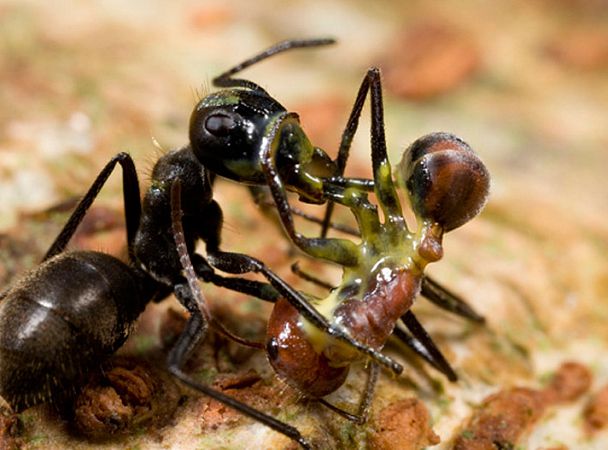
Credit: Mark Moffett/Minden Pictures/Newscom
On the outside, they are ordinary- inconspicuous, brownish-red ants, lacking any large
mandibles, cannot sting, and generally seem like easy pickings for any predator with a rumbly in the tumbly. But when they feel threatened- woah! They raise up their rumps as a warning, says Alice Laciny, an entomologist with Natural History Museum Vienna in Austria who described the first new species of exploding ant since 1935- then, if the would-be attacker—a much larger weaver ant, say—doesn’t back off, one or more tiny ants bite down on it, angle their backsides in close, and flex so hard that their abdomens burst at the seams. By tearing themselves apart, the ants sacrifice themselves to protect the rest of the colony.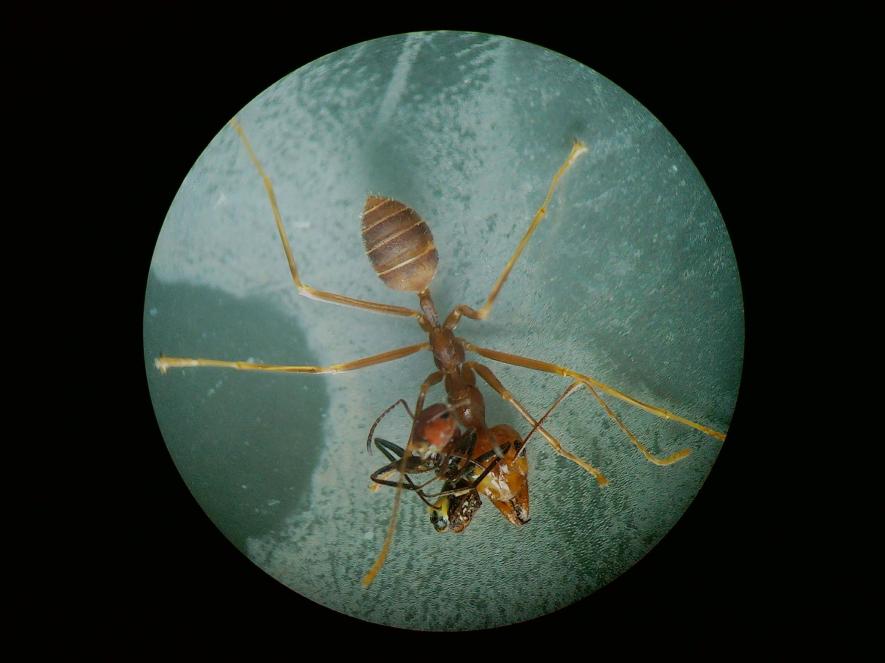
While the behavior of exploding ants has been known since at least 1916, the insects have remained largely mysterious over the decades, with no new species formally described since 1935.
Members of the research team, which consists of entomologists, microbiologists, chemists and botanists, went to Borneo to study the ants. They have since identified 15 different species of the crawly critters, which fall under the umbrella of “Colobopsis cylindrica.”
The team confirmed that not all of the ants had the ability to become tiny suicide bombers, finding that only a minor class of workers were exploders. They’re born with large, poison-filled glands and extra-strong abdominal muscles that contract under stress, bursting the glands to release the poison … killing the brave exploding ant (although the whole action is probably reflexive and involuntary) and either killing the predator or wounding it enough that in never visits that treetop again. The chemical in the sticky goo is an irritant and corrosive – entangling, immobilizing and painfully torturing the invader. Is this going to make a great movie or what?
The scientists write that C. explodens is the model species within the group of exploding ants they encountered, explaining that they are “particularly prone to self-sacrifice when threatened by enemy arthropods, as well as intruding researchers.” Co-author and entomologist Alice Laciny, told The Guardian, that her own experiences with the ants gave her the impression that the goo has “a distinct and not unpleasant smell that’s strangely reminiscent of curry.”
This suicidal tendency, which is similar to that of a bee delivering a sting when threatened, is called autothysis, and is common in superorganisms like ants, who work as a collective and where the needs of the group are more important than the individual in a colony.
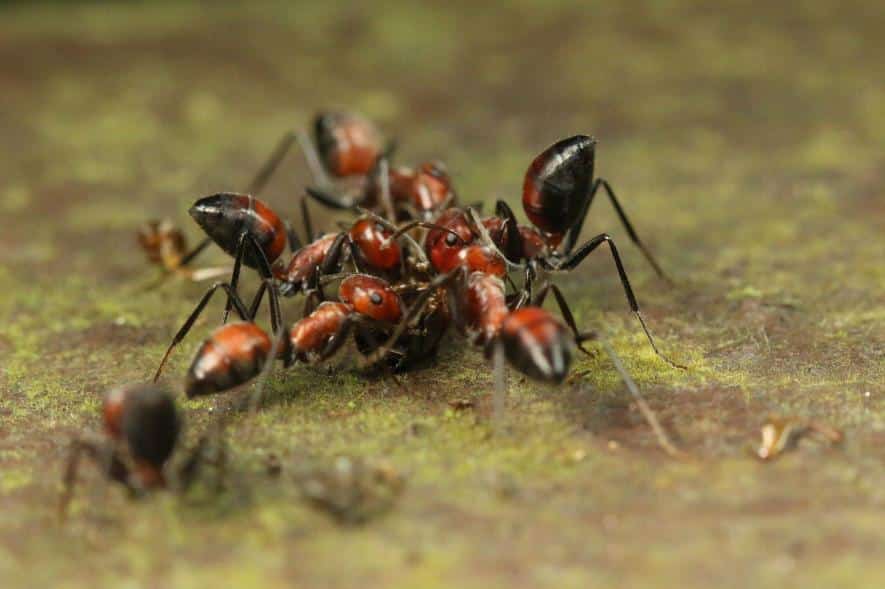
Indeed, it’s the kind of Borg-like collective behavior that can only emerge among super-social organisms. Unlike the individuals of most species, who seek to preserve and proliferate their genes, ants and termites work on behalf of the entire colony; the loss of an individual, while not ideal, is secondary to the needs of the collective, which is why ants are referred to as a superorganism.
While the exploding ants play a dominant role in rainforests, their biology still holds a number of secrets. The observations and experiments conducted on the newly described species have laid important groundwork for future research that will uncover even more details about these enigmatic explosive insects.


























